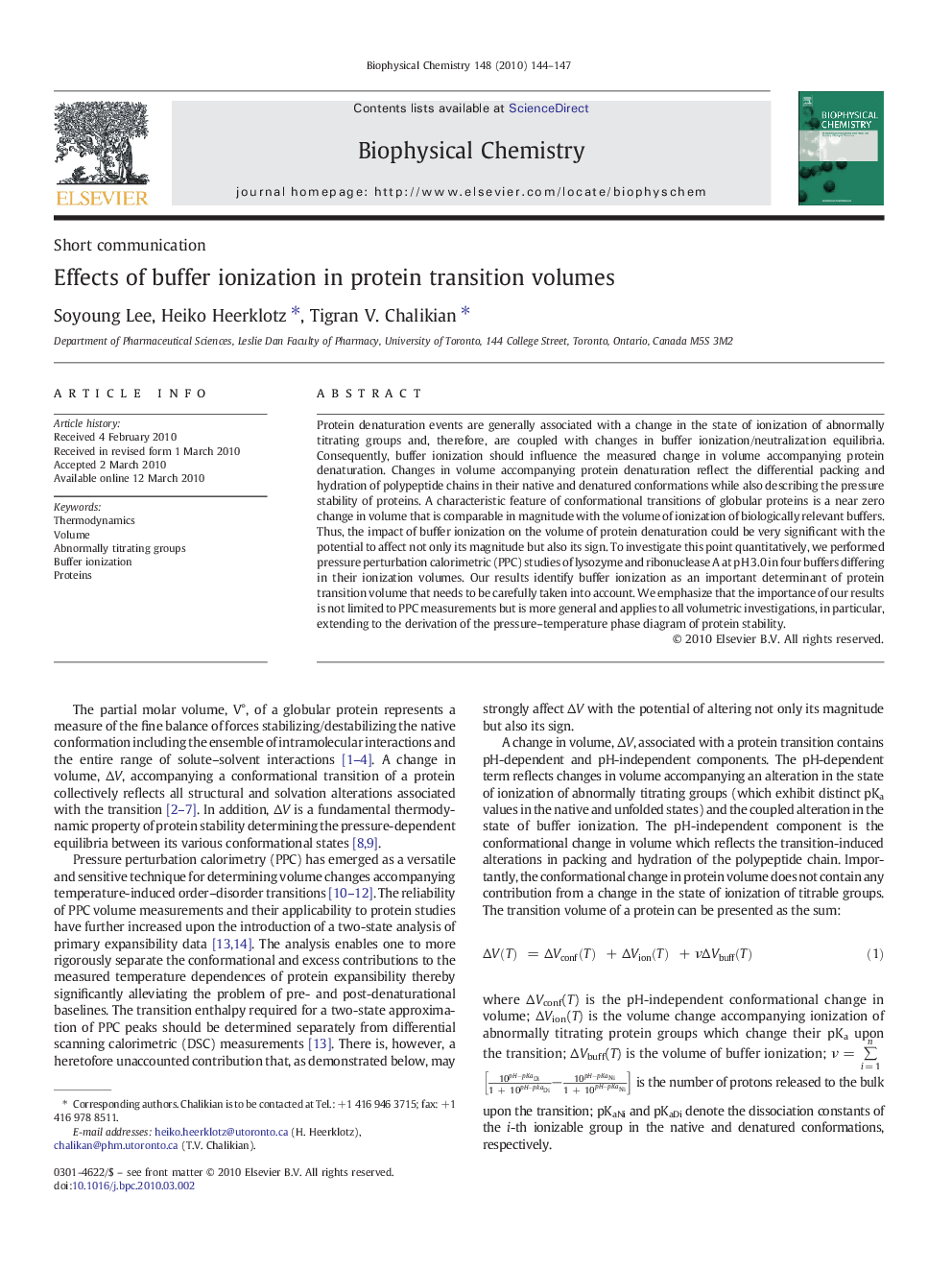| Article ID | Journal | Published Year | Pages | File Type |
|---|---|---|---|---|
| 5371613 | Biophysical Chemistry | 2010 | 4 Pages |
Protein denaturation events are generally associated with a change in the state of ionization of abnormally titrating groups and, therefore, are coupled with changes in buffer ionization/neutralization equilibria. Consequently, buffer ionization should influence the measured change in volume accompanying protein denaturation. Changes in volume accompanying protein denaturation reflect the differential packing and hydration of polypeptide chains in their native and denatured conformations while also describing the pressure stability of proteins. A characteristic feature of conformational transitions of globular proteins is a near zero change in volume that is comparable in magnitude with the volume of ionization of biologically relevant buffers. Thus, the impact of buffer ionization on the volume of protein denaturation could be very significant with the potential to affect not only its magnitude but also its sign. To investigate this point quantitatively, we performed pressure perturbation calorimetric (PPC) studies of lysozyme and ribonuclease A at pH 3.0 in four buffers differing in their ionization volumes. Our results identify buffer ionization as an important determinant of protein transition volume that needs to be carefully taken into account. We emphasize that the importance of our results is not limited to PPC measurements but is more general and applies to all volumetric investigations, in particular, extending to the derivation of the pressure-temperature phase diagram of protein stability.
